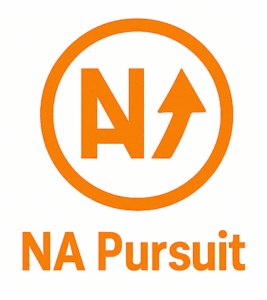Overview — Digital Payments: Is Your Bank Prepared for Apocalypse?
The digital payments landscape is changing at warp speed. Once a novelty, now the lifeblood of commerce. Consider your own last dozen transactions — they’re probably from a digital wallet, mobile payment or online transfer. This is not just a trend; it is a paradigm shift in how money moves, and this shift requires your bank’s full attention. The question is: Are you prepared for the next thing?
This blog post is not about predicting doom; it’s about preparing for a future when digital payments will not only run the world of commerce but be a matter of life and death. For digital payment professionals and business leaders that have a role in payment processing, the ability to adapt to this evolving landscape is crucial. It’s about making sure that your bank goes on to not just survive, but prosper.
Before you can even hope to conquer this difficult territory, here are the major parts you have to focus on:
- Evaluate Your Current State: Analyze your current state of digital payments infrastructure. What are the current platforms you are using? How well do they perform? Are they scalable and secure? Here is where you find your strengths and weaknesses.
- Stay Current with Emerging Technologies: You’ll notice that new technologies are entering the space all the time, from blockchain to real-time payment rails. We will explore these technologies, explaining how they work and their possible impact on your operations. (Instead, imagine a 1 minute embeddable video explaining a core concept like tokenization here).
- Protect Security and Compliance: As with digital payments, the risk also expands. From security protocols to fraud prevention and regulatory compliance, we’ll explore everything you need to know to keep your systems protected.
- Put the Customer at the Center: In the end, digital payments are about customers’ ease of use. Are your interfaces intuitive enough? What options do you offer? The experience should be smooth and intuitive, to be retained and grow. But we’ll tell you how to do better than that.
- Prepare for Future Growth: The digital payment ecosystem is already changing. In this post, we will provide you a framework for strategic planning and in so doing will enable you to navigate safely through the challenges and opportunities that are ahead in the future.
Doing so will allow you to confidently assess, evolve, and effectively secure your bank around the future of digital payments. Let’s begin.

1. A Positive TrendMobile Wallets & Contactless Payments
Underlying Driving Factor: Growing smartphone penetration along with convenience and hygiene concerns (accelerated through pandemic). More consumers want to tap their phones or smartwatches to complete a transaction instead of using physical cards or cash.
Repercussion: This opens up a broad springboard for mobile wallet providers (including Apple Pay, Google Pay, Samsung Pay) and payment processors to convert transaction volume. Retailers benefit from reduced cash handling and faster checkout times.
For example: Starbucks mobile app succeeds; it has ordering and payment together and makes purchase flow seamless.
Actionable Insight:
- For Payment Processors: Make technology development & funding a priority for mobile wallets & contactless treatment (NFC QR codes).
- For Retailers: Set up mobile payment solutions in POS systems and raise consumer awareness of their availability via in-store promotions, to facilitate usage. Opt for Mobile Payments With Loyalty Programs To Increase Customer Engagement
- Fintech Startups: Find nuances in mobile payment security, speed and connectivity with other applications and services that could help you stand out with your firm.
2.Positive: soaring Buy Now, Pay Later (BNPL) growth
Driver: Consumer demand for flexibility, particularly among core millennial/pgenz audiences, and short term credit affordability increase online access.
Impact: BNPL providers (e.g., Affirm, Klarna, Afterpay) are generating tons of consumer spending and retailers can increase sales by implementing this payment method.
For Example : A number of online fashion and electronics retailers have incorporated BNPL options at checkout using BNPL systems, which have resulted in more sales and higher average order values.
Actionable Insight:
- For Retailers: Collaborate with trustworthy BNPL providers. Show BNPL clearly as a payment option at the checkout to increase sales. Keep customers informed about terms and conditions.
- For BNPL Providers: Fostering trust and confidence in responsible lending and transparency. Pursue collaboration opportunities with all types of retailers and sectors.
3.Negative Development: Rise in Cybersecurity Threat and Fraud
Cause: The rise of digital payments means ever more fish in the ocean for cyberwhalers. Phishing scams, data breaches and account takeovers are getting more sophisticated.
Output: Consequences: Loss of consumer trust, financial losses to businesses and consumers, and greater regulatory oversight. That means a lot of investment in security infrastructure.
For example, high-profile data breaches involving major retailers and online platforms are still commonly reported.
Actionable Insight:
- For Payment Company: Focus on strong investment in cybersecurity solutions like tokenization, encryption, multi-factor authentication, and real-time monitoring.
- For Retailers: Train staff on security measures. Keep your systems patched and secure. Use fraud detection systems to determine suspicious activity.
- For Consumers: Use strong password practices, stay wary of phishing scams, and regularly check bank and payment statements.
4.Negative Trend: Regulatory Uncertainties & Compliance
Trends: The digital payments sector is relatively young, meaning that regulations are still fluid worldwide. Governments seek to protect consumers, keep profane activities at bay, and provide a level playing field.
Effect: Compliance can drag on businesses since compliance with this needs to be instant and dynamic. It can also slow innovation, how compliance takes center stage.
In the European Union, the General Data Protection Regulation (GDPR) has changed the way payment companies gather and utilize user information.
Actionable Insight:
- All Companies: Engage dedicated compliance teams to assist in tracking regulatory changes. Bottom line: Be involved with industry associations and regulators to make your voice heard in future regulations.
- International Companies: Get systems and processes in compliance with regulators in every market you are present in. Develop scalable systems that can cater to the different country needs.
Conclusion:
The digital payment industry is dynamic with many prospects and challenges. By recognizing and preparing corporate strategies for these trends, strategists can create a blueprint for success as their companies guide through them. This requires not only commitment to innovation and regulatory compliance but also agility to address the dynamic landscape. Then, the companies who focus on user experience, security, and compliance will succeed. Make sure to keep an eye on newer trends and adjust strategies accordingly.
1.Healthcare:
Step 1: Patient Check-in: Rather than paper forms, patients enter their info and insurance data on a tablet at reception.
Step 2: Copay Collection: The system automates the copay based on the patient’s insurance. The system prompts the patient for payment by tap-to-pay of their card, mobile wallet, or even a QR code associated with an account.
Step 3: Billed Post-Visit: After the appointment, a detailed bill is emailed to the patient with a link to safely pay any outstanding balances. The move also removes paper statements and simplifies collections.
Step 4: Subscription Models – Patients can create recurring payments for virtual visits or medication delivery to a virtual hospital for chronic care management.
2.Tech (Software as a Service – SaaS):
Step 1: Free Trial to Paid plan Step: Users have to enter credit card & sign up for a free trial. At the end of the trial, the user is charged automatically for the subscription tier they selected.
Step 2. App purchases: Users can purchase in-app features or services with the click of a button or by tapping a saved payment method in the app or platform.
Step 3: Subscription Management: Users have the ability to manage their subscriptions, change plans, update payment information, or cancel their subscriptions from their account dashboard.
Step 4: Does SaaS company support multiple currencies: Global SaaS companies enable customers to make payment in their home currency, improving the overall experience and reducing transaction friction.
3.Automotive:
Step 1: Online Reservation: Customers can schedule a service appointment or order parts saying deposit or full payment through the website using card or digital wallet.
Step 2: In-Car Payments: Many of today’s new cars are coming equipped with systems that enable drivers to pay for gas or parking from their dashboard, with transactions tied to their account.
Step 3: Subscription Services: Vehicle manufacturers can provide functions (e.g., superior navigation, real-time site visitors updates, and many others) on a subscription basis to a fleet of vehicles where month-to-month payments are performed mechanically.
Step 4: Fleet management: For example, companies with fleets can use digital payments solutions to help manage costs for fuel and maintenance services as well as to keep track of transactions, and enabling dedicated payment cards to reduce fraud.
4.Manufacturing:
Step 1: Supply Chain Payments: Manufacturers leverage digital platforms to pay suppliers in real-time as soon as the material is received, leading to between two to one week of cash flow advantage for both parties and reduced payment cycle times.
Step 2: Machine-to-Machine Payments: In more sophisticated scenarios, machines can autonomously order and pay for maintenance services, spare parts, or software updates on the basis of data analysis.
Step 3: Merchant payments: High value payments are routed through specialized platforms capable of integrating with your accounting systems.
Step 4: Employee Reimbursements: In lieu of expense claims, employees are reimbursed for travel, tools or other work-related expenses directly to their digital wallets.
That’s just a few examples, and the point is that digital payments are increasingly being woven into all facets of business to improve efficiency and customer experience while unlocking new revenue opportunities. The takeaways for strategists are: Automate and improve your payment processes, employ new digital payment modes tuned to your customers’ needs, and use data from digital payments to continually refine what you offer and how you offer it.

- Catering to Niche Markets (Organic)– A lot of companies are starting to focus on a specific demographic or industry. A mobile wallet provider, for instance, could build features specifically for university students, such as peer-to-peer payments for shared expenses and integrations with campus services. This focused strategy enables greater market depth and brand allegiance in a specific segment. The way I think about it is: rather than selling to the mass, they’re selling to people who will X and Y and Z.
- Inorganic – Strategic partnerships for improved functionality – Instead of developing all the features in-house, the companies have started to tie knots. For example, a payment gateway could open up for an accounting software widely used by business users and automatically trace transactions. This not only provides additional functionality, but also saves development time and cost. It is like taking the two tools you already have and creating a more advanced one.
- Organic Embedded Finance Solutions — Rather than being a stand alone app, payment capabilities are starting to be built into the platforms. Imagine a social network that let people buy items from posts, or an e-commerce site with its own branded payment method. This enables quick and easy payment for users while increasing usage and transaction amounts.
- Cross-Border Payment Optimizations (Organic): The trend of globalization has led companies to adopt technology to better facilitate cross-border transactions. This is with a view of areas such as quicker settlement speeds, lower charges, and enhanced security protocols. One example of this is using blockchain technology for processing international remittances faster and more transparently.
- Investment in Innovative Technologies (Inorganic): To maintain a competitive edge, a number of payment companies are acquiring startups with unique tech solutions. For example, a larger player could acquire a provider of AI-based fraud detection solutions or a crypto payment platform. This immediately gives access to state-of-the-art technology and know-how.
Outlook & Summary
The future of digital payments is changing at warp speed, and in 5 to 10 years, there will likely be Earth Shattering Alterations. Forget smaller enhancements, think jumps of transformation. Here’s what to expect, and what this article ultimately proves:
- Transaction Speed Will Be Real-Time: Instant payments, which are still somewhat novel in many markets, will become the expected status quo. Immediate processing and settlement will be demanded by consumers and businesses alike. Banks need to modernize their infrastructure to accommodate this volume and velocity.
- Embedded Finance Will Become More Fuzzy: Digital payment functionality will be embedded into everyday applications We’ll get more “buy now, pay later” integrated directly onto e-commerce sites, and peer-to-peer payments automatically moving inside our social media apps. It is imperative for banks to partner wisely to survive in this embedded economy.
- Security and Trust Will Matter the Most: As adoption of digital payments climbs, so, too, will the risks. Strong security practices, powered by technologies like biometrics and sophisticated fraud detection systems, will be essential to earning and retaining customer trust.
- Beyond the Card: A continuing shift to alternative payment rails, including increased usage of mobile wallets, cryptocurrencies, and account-to-account transfers, moving out of the world of traditional credit and debit cards. Banks that don’t want to change or can’t change mind lose market share. In a way, you can say that there is a paradigm shift taking place in the entire payment processing industry, with digital payments being the arrowhead spearheading this change. The payments industry is undergoing an entire revolution and this article emphasizes the necessity to adapt beyond digital payments.
Key Takeaway: This is a vital check-up. Your organization now needs to take a closer look at its existing digital payment infrastructure and very ensure that you’re ready for these seismic shifts. Don’t let yourself get blindsided in a fast-evolving market.
Which raises the question: Is your institution preparing for these substantial shifts, or are you hoping the ‘apocalypse’ just skips over you?






